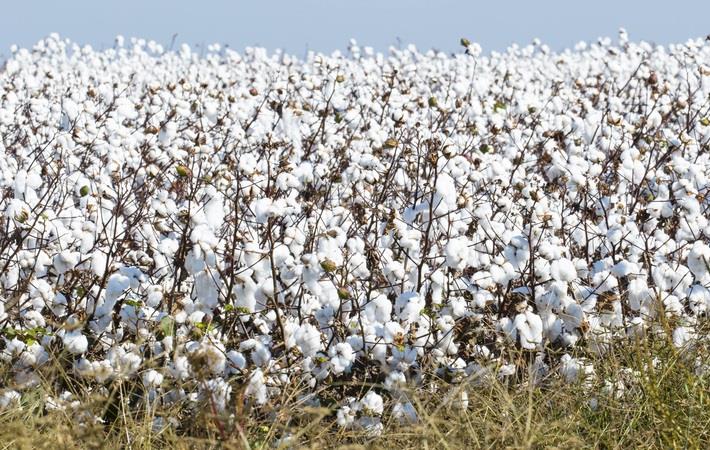Interviews
Half of all cotton-growing regions face severe climate risks by 2040
25 Jun '21
3 min read

Pic: Shutterstock
Runaway climate change could expose half of all global cotton-growing regions to high risks from rise in temperature, changes to rainfall patterns and extreme weather events by 2040, according to a global analysis of climate risks to cotton production commissioned by the Cotton 2040 initiative.
The analysis reveals all six highest cotton-producing countries—India, the United States, China, Brazil, Pakistan and Turkey—are exposed to increased climate risk, particularly from wildfire, drought and extreme rainfall.
The highest climate risk overall is projected for two regions of the world; northwestern Africa, including northern Sudan and Egypt, and western and southern Asia.
Under a worst-case climate scenario, the analysis highlights that all global cotton growing regions will be exposed to increased risk from at least one climate hazard by 2040.
While this increase ranges from very low to very high risk, half of the world’s cotton growing regions will face drastic changes with high or very high-risk exposure to at least one climate hazard.
Titled ‘Adapting to climate change—physical risk assessment for global cotton production’, the analysis was commissioned by the Cotton 2040 initiative, which is facilitated by international sustainability non-profit Forum for the Future and supported by Laudes Foundation.
It was conducted by Cotton 2040 partner and climate-risk specialists Acclimatise, part of Willis Towers Watson’s Climate and Resilience Hub, according to a press release from Willis Towers Watson Public Limited Company, a British multinational risk management, insurance brokerage and advisory company.
Cotton exposure to heat stress (defined as temperatures above 40°C) will be an increased risk across 75 per cent of cotton-growing regions, with the risk being high or very high across less than 5 per cent of regions.
Two-fifths of global cotton-growing regions are projected to experience a fall in growing season as temperatures increase beyond the optimum temperature range for cotton growing.
Water scarcity and extremes in rainfall, from insufficient in some regions to extreme and more intense in others, will present increased risk for the world’s most productive cotton-growing regions. This will add extra pressure to a fibre already under scrutiny for its water footprint, affecting yields and potentially threatening to cause conflict and societal unrest.
Exposure to increased risk from drought will impact around half of cotton. A fifth of the world’s cotton growing regions will be exposed to increased risk from fluvial flooding by 2040, and 30 per cent of such regions will face higher risk from landslides. All cotton growing regions will be exposed to increased risk from wildfires.
Three-fifths of cotton will be exposed to increased risk from damaging wind speeds, and up to 10 per cent will be exposed to increased risk from storms.
Cotton has a market worth about $12 billion, makes up about 31 per cent of all raw materials used in the global textile market with a yearly economic impact of over $600 billion, and supports the livelihoods of around 350 million who cultivate or process cotton.
Approximately 90 per cent of farmers grow cotton on less than 2 hectares of land and are located in developing countries, mainly in Central and West Asia, Southeast Asia and Africa.
The analysis reveals all six highest cotton-producing countries—India, the United States, China, Brazil, Pakistan and Turkey—are exposed to increased climate risk, particularly from wildfire, drought and extreme rainfall.
The highest climate risk overall is projected for two regions of the world; northwestern Africa, including northern Sudan and Egypt, and western and southern Asia.
Under a worst-case climate scenario, the analysis highlights that all global cotton growing regions will be exposed to increased risk from at least one climate hazard by 2040.
While this increase ranges from very low to very high risk, half of the world’s cotton growing regions will face drastic changes with high or very high-risk exposure to at least one climate hazard.
Titled ‘Adapting to climate change—physical risk assessment for global cotton production’, the analysis was commissioned by the Cotton 2040 initiative, which is facilitated by international sustainability non-profit Forum for the Future and supported by Laudes Foundation.
It was conducted by Cotton 2040 partner and climate-risk specialists Acclimatise, part of Willis Towers Watson’s Climate and Resilience Hub, according to a press release from Willis Towers Watson Public Limited Company, a British multinational risk management, insurance brokerage and advisory company.
Cotton exposure to heat stress (defined as temperatures above 40°C) will be an increased risk across 75 per cent of cotton-growing regions, with the risk being high or very high across less than 5 per cent of regions.
Two-fifths of global cotton-growing regions are projected to experience a fall in growing season as temperatures increase beyond the optimum temperature range for cotton growing.
Water scarcity and extremes in rainfall, from insufficient in some regions to extreme and more intense in others, will present increased risk for the world’s most productive cotton-growing regions. This will add extra pressure to a fibre already under scrutiny for its water footprint, affecting yields and potentially threatening to cause conflict and societal unrest.
Exposure to increased risk from drought will impact around half of cotton. A fifth of the world’s cotton growing regions will be exposed to increased risk from fluvial flooding by 2040, and 30 per cent of such regions will face higher risk from landslides. All cotton growing regions will be exposed to increased risk from wildfires.
Three-fifths of cotton will be exposed to increased risk from damaging wind speeds, and up to 10 per cent will be exposed to increased risk from storms.
Cotton has a market worth about $12 billion, makes up about 31 per cent of all raw materials used in the global textile market with a yearly economic impact of over $600 billion, and supports the livelihoods of around 350 million who cultivate or process cotton.
Approximately 90 per cent of farmers grow cotton on less than 2 hectares of land and are located in developing countries, mainly in Central and West Asia, Southeast Asia and Africa.
Fibre2Fashion News Desk (DS)
Popular News
Leave your Comments
Ata Turgutalp
Eliar Elektronik San. A.S.
Christian Guinet
French Textile Equipment Manufacturers’ Association (UCMTF)
































-Ltd..jpg?tr=w-120,h-60,c-at_max,cm-pad_resize,bg-ffffff)





.jpg?tr=w-120,h-60,c-at_max,cm-pad_resize,bg-ffffff)
.jpg?tr=w-120,h-60,c-at_max,cm-pad_resize,bg-ffffff)






